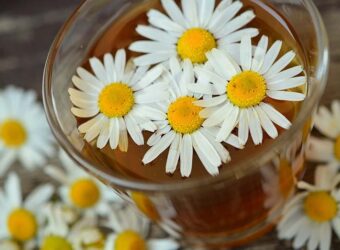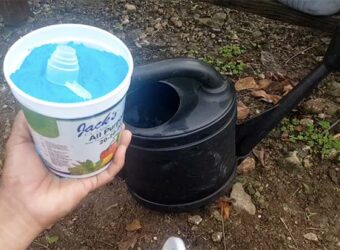Cucumbers can cause people to burp, which is embarrassing. However, breeders have created cucumbers that cause fewer burps, called burpless cucumbers. Here is everything you need to know to grow burpless cucumbers.
Quick Growing Guide for the Burpless Cucumber
| Plant Type | Annual | Resistant to | Varies by variety |
| USDA Hardiness Zone | 2a-11b | Maintenance | Moderate |
| Season | Late spring through frost | Soil Type | Fertile |
| Exposure | Full sun | Soil pH | 6-6.8 |
| Time to Maturity | 50-70 days | Soil Drainage | Well drained |
| Water Needs | heavy | Companion Plants | Sweet Alyssum, Yarrow, Dill, Rye, Buckwheat, Radishes, Coneflower, Borage, Anise Hyssop, Mountain Mint |
| Planting Depth | ½ inch deep | Don’t Plant Near | Lettuce, Arugula, Beets |
| Spacing | 6 feet | Family | Cucurbitaceae |
| Height | 8-18 inches | Genus | Cucumis |
| Spread | 3-8 feet | Species | sativus |
| Common Pests and Diseases | Alternaria leaf blight, Anthracnose Aphids, cucumber beetles, others | Variety | Varies, common ones are Burpless Beauty, Garden Sweet Burpless, and Sweet Success |
What Is a Burpless Cucumber?
Cucumbers contain cucurbitacin. This substance can cause digestive issues, including burps. Burpless cucumbers have been bred to have less cucurbitacin, and so cause fewer digestive issues. In addition, many people refer to all slicing cucumbers as burpless cucumbers, although that is not true. There are many slicing cucumbers that are not burpless.
Cultivation and History
Cucumbers are subtropical vegetables from the Himalayas and Northern Thailand. They are now cultivated in almost all the areas where people live.
Characteristics of the Burpless Cucumber
Growth Habit
Burpless cucumbers grow on long vines, taking up quite a bit of space in the garden. However, there are bush-type cucumbers with vines that only get about three feet long.
Fruit Size, Color, Texture, Taste
Burpless cucumbers have thin skin, less cucurbitacin, and fewer seeds than traditional cucumbers. All the burpless cucumbers are green in color, but some are light green, and others are dark green. The burpless cucumbers are very crisp and sweet tasting. They do not have to be peeled to be enjoyed.
Cucumber Type
Burpless cucumbers are all hybrids bred to contain less cucurbitacin than traditional cucumbers.
Plant Resistant To Diseases
A cucumber plant’s resistance to disease varies depending on the type of burpless cucumber you plant. For example, garden sweet burpless is resistant to powdery mildew and downy mildew.
Caring for the Burpless Cucumber
Light
Burpless cucumbers need a minimum of six hours of sunlight to grow and produce cucumbers. They produce more cucumbers when given eight or more hours of sunlight a day.
Soil
Burpless cucumbers need rich soil with a lot of organic matter in it. If you are growing the cucumber in the ground, till three inches of compost into the top six inches of soil at the beginning of each season.
If growing a cucumber in a container, mix a rich potting soil by taking one part general potting soil and one part compost, mix, and fill the container with the mix. You can also use a potting mix designed for vegetables.
Planting
You can plant burpless cucumbers from seed or buy transplants. If you are growing your cucumbers in the ground, form hills of soil four inches tall and four inches in diameter. Plant four seeds ½ inch deep in the hilled soil. When the seedlings have two true leaves, pick the strongest two seedlings. Pinch the other two seedlings off at ground level. Don’t try to pull the seedlings, or you will damage the delicate roots of the survivors.
If you are planting burpless cucumbers in a pot, the pot needs to be at least twelve inches deep and fourteen inches in diameter. Anything smaller won’t have room for the roots and will dry out too often. Plant four seeds in the pot ½ inch deep. Pinch off the two weakest seedlings and let the other two seedlings grow. You will need a trellis in your pot for the burpless cucumbers to climb to save space. Trellising cucumbers also keeps the cucumbers clean and reduces belly rot. Alternatively, you can use a hanging basket and let the vines trail below the basket to the ground.
For complete instructions on starting seeds and planting transplants, see my article, “How To Grow Cucumbers In Pots.”
When to Plant Burpless Cucumbers?
Indoors, plant burpless cucumbers about three weeks before the last possible frost date. Outdoors, plant cucumbers when the soil temperature is at least 60 degrees F and the air temperature is around 75 degrees F.
Water
Burpless cucumbers contain a lot of water. It is important to keep the soil moist, or the cucumbers will become bitter. Soggy soil will cause root rot. Most burpless cucumbers need 1-2 inches of water a week, depending on how hot it is. Give the water one inch at a time, and plan on watering your burpless cucumbers twice a week in hot climates and once a week in more mild ones.
Temperature
Cucumbers grow best when the air temperature is 75-85 degrees F. They will not tolerate frost, so don’t plant them too early in the year, or you will lose them. In the fall, harvest all the cucumbers the night before a frost, as the vine will die in the cold.
Fertilizer
Fertilize cucumbers grown in the ground three times. First, follow the soil test recommendations from your soil test before planting the cucumbers. In the absence of a soil test, use three pounds of 5-10-10 fertilizer for 100 square feet. Work the fertilizer into the top inch or two of the soil, then hill the soil and plant your cucumbers.
A week after your burpless cucumbers start to blossom, side dress with one pound of 33-0-0 per 100 square feet. To side dress fertilizer, spread the fertilizer beside the row of cucumbers and about six inches from the plant. Mix the fertilizer into the top of the soil, then water the area. Repeat in three weeks. Do not fertilize in-ground cucumbers after this as the vines will grow lots of foliage and few cucumbers.
Cucumbers in pots need more fertilizer because the nutrients in the soil are soon exhausted. For more on fertilizing cucumbers, read my article.
Why Plant Burpless Cucumbers?
Burpless cucumbers are sweeter than traditional cucumbers and are less likely to cause burping and other digestive problems. These cucumbers are generally used as slicing cucumbers and are eaten fresh.
Where to Buy Burpless Cucumbers?
Burpless cucumbers are easily obtainable. Burpee has several varieties of burpless cucumbers. Johnny’s Select Seeds has several types, and Amazon carries seeds if you know the name of the variety you want. Burpless cucumbers are popular, so you should be able to find them at any nursery as seeds and as transplants. You may have difficulty finding transplants in big box stores, depending on when you go there. Home Depot lists some, and Lowes and Walmart list only seeds but may have a few at the stores.
Pest & Diseases
The biggest pest for burpless cucumbers is the cucumber beetle. Aphids are also a major problem. You can find a more complete list of pests here.
Cucumbers get several diseases. They get powdery mildew, downy mildew, bacterial diseases, and viruses. Most diseases can be prevented by good farming practices. Do not get the foliage wet when watering the cucumbers, leave them enough space so air can circulate around them, and care for them so they are healthy enough to resist diseases. Many burpless cucumber varieties are resistant to specific diseases. You can look them up on the Cornell University disease resistance site.
Harvesting
Burpless cucumbers are harvested when they are still green and immature. They are generally harvested when they are six to eight inches long. The seed packet or transplant tag will tell you how long to let them get before harvesting them.
To harvest a cucumber, cut the stem ¼ inch above the cucumber. Yanking or twisting the vine to remove the cucumber will damage the vine and reduce your overall yield. Once cucumbers start producing, harvest them at least every other day.
Cucumbers get fibrous, yellow, and become inedible when ripe, and you don’t want to miss a cucumber and let it get too ripe to eat. In addition to being disappointing, letting the burpless cucumber get ripe will reduce the number of cucumbers you get from the vine.
Storage
Unfortunately, cucumbers store best in a humid environment that is 55 degrees and dark. Most homes do not have something like that, so store your cucumbers in the crisper drawer of the refrigerator. They last about a week in there but taste better the sooner you eat them after harvest.
Nutrition of Cucumbers
Cucumbers are a good source of vitamins C and K, have a small amount of potassium, magnesium, and manganese, and are a good source of phytonutrients. They also have lots of water and fiber. A whole cup of cucumbers has thirteen calories.
Common Uses of Burpless Cucumbers
Burpless cucumbers are used fresh. They are often used in salads, on sandwiches, or eaten alone. This is a good salad recipe for burpless cucumbers from North Dakota State University Extension.
- 5 cups cucumbers, peeled and slice (approx. 5 whole cucumbers)
- 1½ cups half and half
- ½ cup water
- ½ teaspoon salt (adjust to taste)
- ¼ teaspoon black pepper (adjust to taste)
- ½ cup onion, sliced
- 2 tablespoons fresh dill
- 3 tablespoons vinegar
Place sliced cucumbers in a bowl. In another bowl, mix the rest of the ingredients. Pour this mixture over the cucumbers. Refrigerate for four hours to allow flavors to mix. This recipe serves ten as a side dish.
In conclusion, burpless cucumbers are hybrids bred to have less cucurbitacin, the substance that causes burps and other digestive problems. There are several varieties that claim to be burpless. For the most part, these cucumbers are readily available as seeds. Transplants are easy to find at nurseries but are hit or miss at big box stores. Burpless cucumbers are grown just like more traditional cucumbers. They are best eaten fresh in a salad or alone as a snack.






